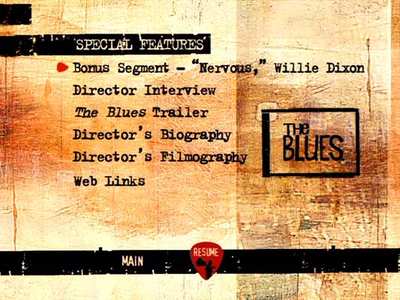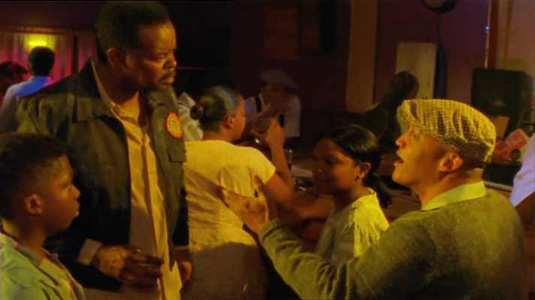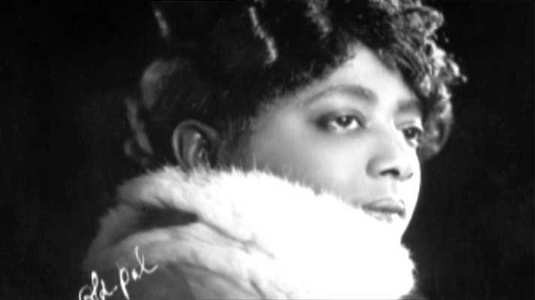Review of Warming By The Devil`s Fire
Introduction
This is one of seven films that comprise the complete: `Martin Scorsese Presents The Blues: A Musical Journey`. It was an interesting concept. Scorsese initiated and curated the project, and indeed Directed one of the movies. But he also gave six other Directors a set of DV-Cams, a limited budget for archive material and post-production - and carte blanche to go discover the blues for themselves. "Our goal was never to produce a definitive work on the blues. It was to create highly personal and impressionistic films," states Martin Scorsese. Released here and in the US as either individual movies, or as a deluxe box set comprising all 7 DVD`s that each include the movie and a variety of compelling extras. There`s been a lot of interest in these releases since they first aired in the USA (on PBS - the channel for culture-vultures) in 2003 and between them they contain a veritable treasure trove of information, passion and atmosphere that will thrill blues fans.
Black Director, Charles Burnett takes an extremely personal, almost autobiographical approach to his contribution. Using a mix of narrative drama, and a wealth of incredible archive material, he paints an interesting tale of a young boy, on his way to the South from LA to be baptised, stopping off to visit an incorrigible blues loving, life loving uncle. This uncle makes a mission of exposing the young boy to a taste of what he is about to be `saved` from - including a whole lot of the `devil`s music`. The rapport between the two is a little laboured and one-sided, and in truth the Uncle`s educating commentary is tantamount to a narrator`s voice-over, but if you can forgive the slightly wooden delivery there is much to be enjoyed and plenty to learn.
The uncle is a blues obsessive, playing fabulous `78`s night and day, and this device is often used as an excuse to splice in some wonderful archive material. For example, the boy sleeps head to toe with his uncle whose feet start moving to an unheard rhythm in his sleep. The uncle awakes, and like a vinyl junky, despite the hour and the fact that the boy is supposedly asleep, reaches for a disc. We then cut to the ferocious Son House in full tilt, the man who sang of the craziness of lover`s rages and then killed a man in a classic example of real life imitating art. It`s a heady mix of drama and historic material and most the time it works. Some of the `connects` are a little too obvious - like the introduction to slide blues being precipitated by the boy plucking at a taut wire against the Uncle`s shack, and then running a small jar (conveniently on the wall next to him) up the wire to bring that slide sound from nowhere. But the film is generally great value with some brilliant clips of great performances.
Amongst the best of these are: Sister Rosetta Thorpe playing her electric guitar with demonic fever. Maimie Smith, credited as being the first woman to record the blues, singing the immortal lines: `I love my man but he treats me like a dawg…`. We also get versions of `Deep Moaning Blues` and `Black Cat Hoot Owl Blues` featuring a young Louis Armstrong amongst the resident backing ensemble of the great woman.
There`s Ida Cox doing `Four Day Creep` and the shameless Lucille Brogan singing the bluest of the blues with `Shave `em dry`. ("I got nipples on my teats bigger than the end of my thumb.."). There`s a spellbinding performance by a toothless Sam Chatman of `Sittin` at the top of the world..` that helps illustrate the percussive nature of much blues guitar playing. (Hear John Lee Hooker pre-1970`s to get some real evidence of this theory, that the guitar became the favoured instrument of the blues fraternity because traditional African drums were banned for slaves, and guitars were a very cheap ($3 in Sears and Roebuck catalogues of the day) and portable alternative that lent themselves to percussive playing.)
In Mississippi John Hurt`s `Candy Man` and `Spike Driver Blues` we hear a plucking style that immediately brings to mind early Dylan who was a great fan of the folk-blues. Lightnin` Hopkins can also be seen and heard here, sounding like the underbelly of the devil`s swamp itself as he grunts and growls across the top of his frenetic guitar. There`s humour too, with Willie Dixon`s `Nervous` being sang with a nervous and repetitive stutter, adopted again and again by Rock bands as a dramatic device (Who, BTO et al).
Perhaps the most magical moment of all is the archive track (from the late 50`s / early `60`s) of John Lee Hooker doing a solo run through of `Boom Boom` - so laid back he`s nearly asleep, with a voice rumbling two octaves lower than thunder. Heady stuff and guaranteed to delight!

Video
The new material is nicely shot and mastered, and even the worst of the archive material stands up well.

Audio
The choices are standard Dolby or Dolby Surround and either choice will give you satisfying results. Even the archive recordings have been carefully mastered and the results are better than you`d expect given the sources.

Features
The movie, in common with every other movie I`ve seen, is best viewed sans Director`s commentary. You don`t need to know how the car works to enjoy the ride. Burnett clearly senses that, with a natural reticence to spoil the atmosphere of his own work with too much conversation. When he does speak, it`s with a quiet and respectful reverence for the topic and it`s clearly an extremely personal journey.
Also included are all the songs from the film in their un-interrupted entirety, which is a very nice touch, ensuring that this disc won`t gather dust in your collection. You`ll be spinning this one again and again!
There`s also a `bonus performance` of Willie Dixon`s `Nervous` in its entirety.
The Director`s interview is pleasing too with Burnett revealing himself as a quiet and contemplative Director who has clearly enjoyed pulling the movie together. It`s worth noting that `Junior` in the film looks frighteningly like a young Mr. Burnett and this is surely no coincidence! There`s also a pretty standard text based filmography and biography, as well as some useful web-links and the trailer to the series.

Conclusion
Using a mix of autobiographical, drama based narrative and a generous helping of some of the finest blues recordings and performances you`re ever likely to see in one place, this is a very enjoyable and informative piece of work. Occasionally the dialogue is a little laboured, as it tries to be both narrative and the voice of the documentary, but this is entirely outweighed by the sheer wonder of the content on offer. An essential purchase for blues fans, and a recommended purchase for the merely curious too.
Your Opinions and Comments
Be the first to post a comment!